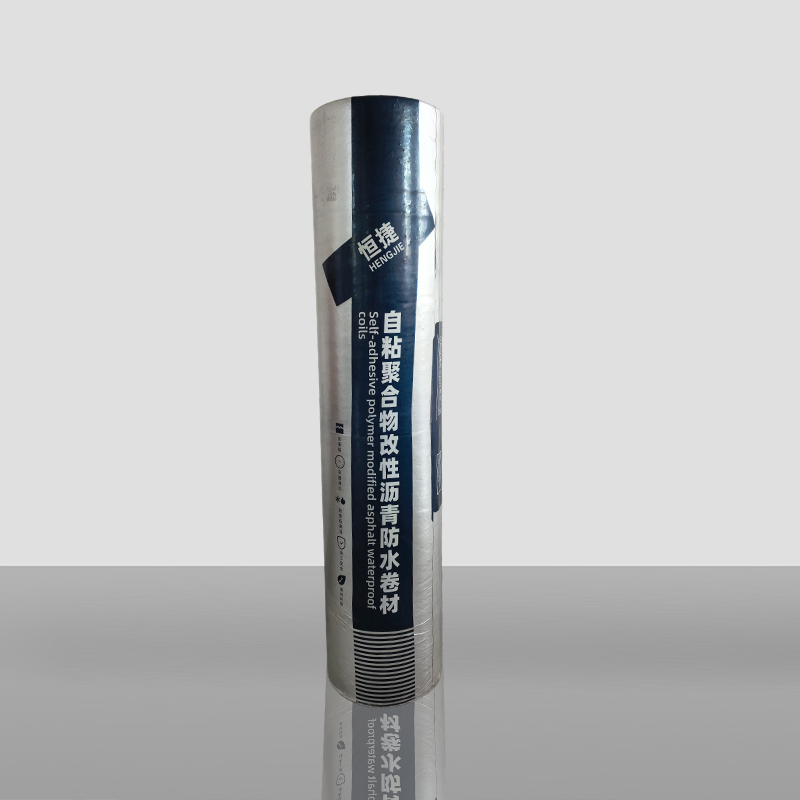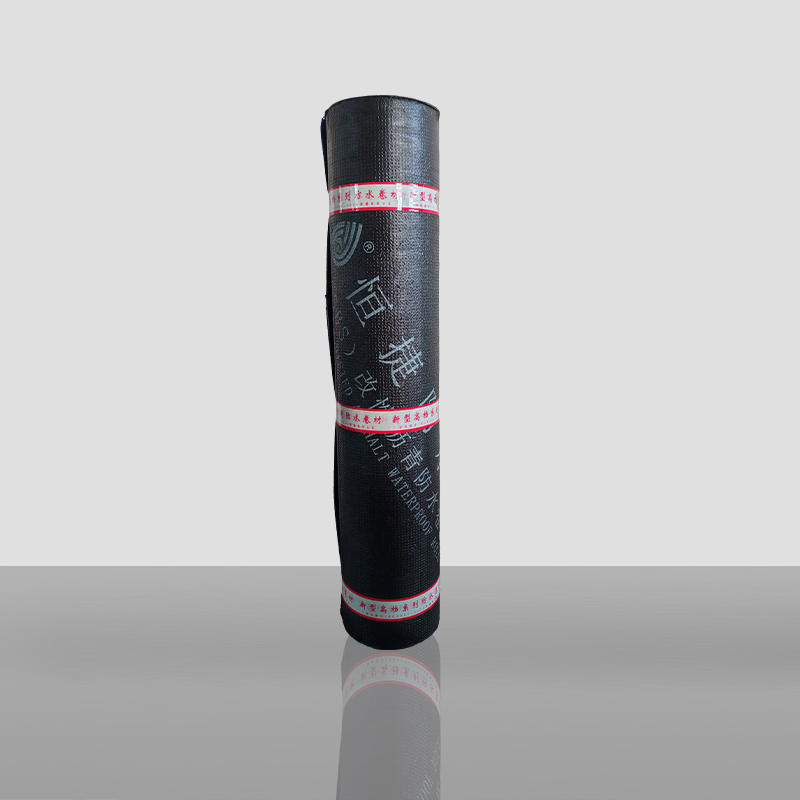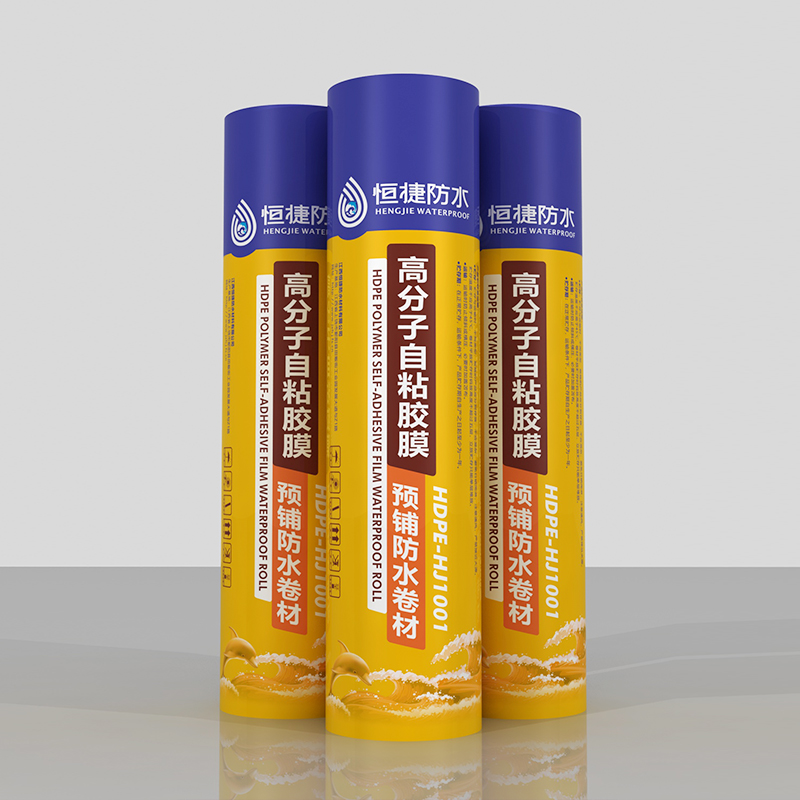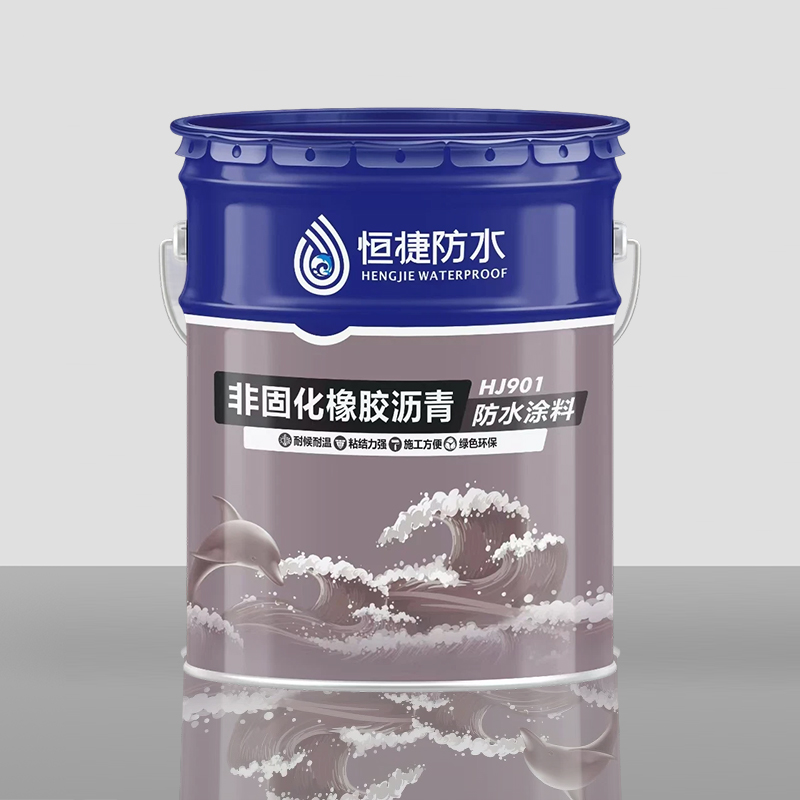What are the key points of the lap edge sealing process of polymer self-adhesive film pre-laid waterproof membrane?
Release Time : 2025-10-10
The overlapping edge sealing process for polymer self-adhesive film pre-laid waterproof membranes is a critical step in ensuring the integrity and durability of the waterproof layer. Its core objective is to achieve a leak-proof seal at the overlapping area through the synergistic effect of material properties and construction operations. This process requires systematic control across seven aspects: overlapping method selection, substrate preparation, overlapping edge cleaning, sealing material application, roller reinforcement, detailing, and acceptance and maintenance.
The choice of overlapping method should be based on material properties and project requirements. Polymer self-adhesive film pre-laid waterproof membranes are commonly used in two ways: self-adhesive and tape-assisted overlapping. Self-adhesive overlapping relies on the membrane's own polymer adhesive layer and is achieved by direct pressing after removing the release film. It is suitable for overlapping long edges on flat substrates. Tape-assisted overlapping uses double-sided self-adhesive tape as a transition layer, first applied to the lower membrane and then covering the upper membrane. It is suitable for overlapping short edges or irregularly shaped areas. For both methods, ensure the overlap width complies with specifications. The overlap on the long side should generally be no less than 70 mm, and the overlap on the short side no less than 80 mm, to provide sufficient bonding area.
Substrate preparation is essential for ensuring a successful seal. Before application, remove debris, dust, and visible water from the surface of the substrate to ensure it is firm, flat, and free of loose or sandy areas. While a damp substrate does not need to be completely dry, it should be free of water accumulation to prevent it from affecting the adhesive's activity. Sharp protrusions or indentations in the substrate should be repaired in advance to prevent them from puncturing the membrane or causing a poor bond. Furthermore, the substrate must be strong enough to withstand pedestrian traffic to prevent deformation caused by foot traffic during application.
The cleanliness of the overlapped edge directly impacts the quality of the seal. Before application, clean the overlapped area with a clean cloth or compressed air to ensure it is free of dust, oil, and moisture. For self-adhesive joints, immediately press the pre-laid waterproof membrane after removing the insulating polymer self-adhesive film to prevent the adhesive layer from being exposed for too long and absorbing impurities. For tape-assisted joints, check the substrate for dryness before applying the tape to prevent moisture from causing the tape to bulge. Care should be taken to protect the surface of the roll during cleaning to avoid scratches that could affect the self-adhesive properties.
The sealing material used must be compatible with the roll's characteristics. Self-adhesive joints rely on the roll's own adhesive layer and do not require additional sealing material, but the adhesive layer must be evenly bonded and undamaged. For tape-assisted joints, use a double-sided self-adhesive tape compatible with the roll, ensuring long-term water resistance. For irregularly shaped areas or end treatments, sealant can be used for enhanced sealing. The sealant must be flexible and weather-resistant to accommodate deformation of the substrate. During application, the sealant must be evenly applied to fill gaps to prevent hollowing.
Roller pressing is a key step in ensuring a tight seal. After the overlap is complete, use a roller to repeatedly roll the joint from the center toward the sides to expel air and ensure full contact between the adhesive and the base layer. Apply uniform pressure to avoid localized overpressure that could cause deformation of the membrane. For vertical overlaps, mechanical fixing can be used. Nail the self-adhesive edge 10 to 20 mm from the membrane edge, with a spacing of 400 to 600 mm. Ensure that the fixing point is completely covered by the upper membrane to prevent water seepage.
Detailed attention is key to ensuring a reliable seal. Additional layers, at least 250 mm wide, should be applied to areas such as corners, post-cast joints, and pile heads. These layers should be made of the same material or a reinforcement layer. A quick-setting polymer cement slurry should be applied between the additional layer and the base layer and primary waterproofing layer, then adhered and compacted. For through-wall pipes, a groove should be created around the pipe base, filled with sealing material, and then an additional waterproofing layer should be applied to ensure a tight seal at the pipe base.
Inspection and maintenance are essential to ensure long-term effectiveness. After construction is complete, a closed water test or water spray test is required to check for leaks along the overlapped edges. Following acceptance, a protective concrete layer should be poured promptly to prevent the membrane from being exposed to long-term aging. If the waterproofing layer is accidentally damaged during subsequent construction, it must be repaired immediately by a qualified professional. Repairs require cleaning the damaged area, patching with a membrane of the same material, and resealing the overlapped edges.







